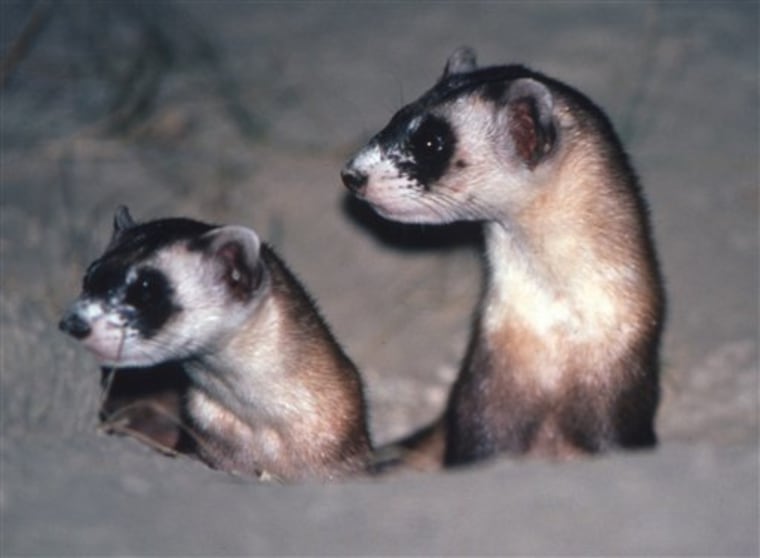The outlook is good for black-footed ferrets, North America's most endangered mammals and only native ferrets, which are rebounding after near extinction in part due to their ability to survive their youth, new research suggests.
Black-footed ferrets (Mustela nigripes) are related to the domestic ferrets (Mustela furo), a separate species, which the American Ferret Association claims is the nation's third most popular pet.
The wild ferrets live fewer than five years and cannot reproduce until around their first birthday. With such a short life span, just a slight improvement in the survival rate of young black-footed ferrets rapidly increases the population, says Matt Grenier, a biologist for the Wyoming Game and Fish Department who led a study of the animals' lifecycle.
"Most mammals that have been taken into captivity have a slow life history, unlike the fast life history of the [black-footed] ferret," Grenier said.
Understanding the sped-up reproductive lifecycle of the black-footed ferret has led Grenier and his colleagues to predict a bright future for black-footed ferrets.
Ferrets' troubled history
No one really knows how many black-footed ferrets once lived in North America's prairies, but scientists believe the animals were once common and widespread until farmers began converting ferret homes on prairie lands into agricultural fields. To keep fields pest-free, people poisoned pesky prairie dogs and thus killed the prey and food source of black-footed ferrets, inadvertently also killing them off.
In addition, black-footed ferrets lost their lives to exotic diseases such as the sylvatic plague, which kills both ferrets and prairie dogs. The disease was introduced to North America by rats entering San Francisco Bay in the early 1900s and arrived in Wyoming by 1930.
Proclaimed extinct prematurely, the last 120 feral ferrets were discovered in 1981 after a Wyoming farm dog brought one home in its mouth. A captive breeding program begun in 1991 has successfully released ferrets into the wild in six states and Mexico.
Between 1991 and 1994, the Wyoming Game and Fish Department reintroduced 220 captive-born ferrets in Shirley Basin, Wyoming. But the new ferret populations struggled with disease. By 1997, only five of these ferrets were found in the wild.
Ferrets and prairie dogs associated
Today, the population looks like it's on the upswing. Grenier, co-author of the new lifecycle study published in the Aug. 10 issue of the journal Science, counted 223 black-footed ferrets running around Shirley Basin in 2006.
"The captive breeding program is a big success and still operating," said Grenier. "It serves [as] a model for many other species. Field reintroductions are showing a lot of promise, especially given our results that show that recovery is possible because of the black-footed ferret's potential for rapid population growth."
In Wyoming, Grenier's team tracks both black-footed ferret and prairie dog populations. The scientists think the rise in numbers of ferrets in Shirley Basin is related to an increase in prairie dog abundance (the ferrets not only eat them but also use prairie dogs' burrows as places to hide and raise their young).
The surveys give Grenier hope that ferret populations are on the mend. But the reintroduction program is far from over.
"In order for this program to continue being a success, additional funding must be secured," said Grenier. "There is also a lack of large prairie dog complexes — a group of closely associated prairie dog colonies — that are suitable for black-footed ferret reintroductions in North America."
